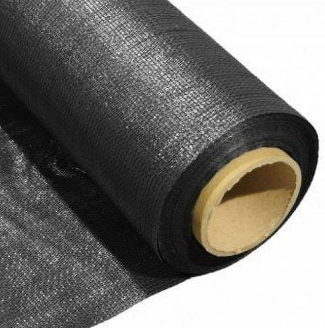- Understanding the Role of Geomembrane Liners in Waste Management
- Innovations in Geomembrane Liners for Water Management
- Geomembrane Liners: A Comprehensive Guide
- The Future of Geomembrane Liners in Civil Engineering
- Geomembrane Liners: Enhancing Landfill Stability
Manager:
WhatsApp:+86 177 0135 2670
Tel:+86 177 0135 2670
Email:marketing@okorder.com
Address:3rd Floor, No.2 Building, No.1 Sanlihe Road
What are the three types of geotextile fabric?
Geotextile fabrics play a crucial role in various civil engineering and environmental projects, providing essential functions such as filtration, separation, reinforcement, and drainage. Among the diverse range of geotextile materials available, composite geomembranes and high-density polyethylene geomembranes stand out for their specific characteristics and applications. In this comprehensive guide, we delve into the three primary types of geotextile fabric, exploring their features, uses, and advantages.

Introduction to Geotextile Fabric
Geotextile fabric, a synthetic material engineered for geotechnical applications, serves as a versatile solution in construction, environmental, and infrastructure projects. Typically made from polypropylene or polyester fibers, these fabrics offer exceptional strength, durability, and permeability, making them indispensable in various civil engineering tasks.
1. Woven Geotextile Fabric
Woven geotextile fabric stands out for its high tensile strength and excellent stability, making it ideal for applications requiring load distribution and soil stabilization. Manufactured through a weaving process that interlocks individual yarns, this type of geotextile exhibits superior puncture resistance and filtration capabilities.
Composite Geomembrane
Composite geomembranes integrate geotextile and geomembrane layers, combining the filtration and reinforcement properties of Geotextiles with the impermeability of geomembranes. Comprising multiple layers bonded together, composite geomembranes offer enhanced strength, durability, and hydraulic performance, making them suitable for containment applications in landfills, ponds, and reservoirs.
Composite geomembranes excel in scenarios where conventional geomembranes alone may be insufficient, providing a cost-effective solution for preventing fluid migration and soil erosion. The integration of geotextile fabric enhances the interface friction between the geomembrane and surrounding soil, reducing the risk of liner slippage and ensuring long-term stability.
2. Non-Woven Geotextile Fabric
Non-woven geotextile fabric consists of randomly oriented fibers bonded together through mechanical, thermal, or chemical processes. This type of geotextile offers excellent filtration, drainage, and separation properties, making it indispensable in applications such as road construction, erosion control, and landscaping.
Non-woven geotextiles provide effective soil stabilization by preventing the mixing of different soil layers, promoting proper drainage, and reinforcing weak subgrades. Their high porosity enables efficient water flow while retaining soil particles, preventing clogging and maintaining long-term performance.
High Density Polyethylene (HDPE) Geomembrane
High-density polyethylene (HDPE) geomembranes represent a durable and impermeable solution for containment and environmental protection applications. Manufactured from high-quality HDPE resins, these geomembranes offer exceptional chemical resistance, UV stability, and mechanical properties, ensuring reliable performance in harsh environmental conditions.
hdpe Geomembranes serve as primary barriers in waste containment facilities, reservoirs, and industrial ponds, effectively preventing the migration of contaminants and preserving water quality. Their smooth surface reduces frictional resistance, facilitating efficient installation and enhancing long-term durability.
3. Knitted Geotextile Fabric
Knitted geotextile fabric features a unique construction characterized by interlocking loops of synthetic yarns, providing high tensile strength and flexibility. This type of geotextile offers excellent conformability to irregular surfaces and superior filtration properties, making it suitable for drainage, erosion control, and slope stabilization applications.
Knitted geotextiles excel in scenarios where flexibility and elongation are critical, adapting to changes in substrate conditions and minimizing the risk of installation damage. Their open structure promotes rapid water flow while retaining soil particles, ensuring optimal hydraulic performance and long-term stability.

Conclusion
Geotextile fabrics encompass a diverse range of materials tailored to meet specific engineering requirements and project challenges. From woven and non-woven geotextiles to composite geomembranes and HDPE geomembranes, each type offers unique properties and benefits for various civil engineering, environmental, and geotechnical applications.
Understanding the characteristics and applications of different geotextile materials is essential for selecting the most suitable solution for specific project needs. Whether it's soil stabilization, drainage, filtration, or containment, geotextile fabrics play a vital role in enhancing the performance, longevity, and sustainability of infrastructure projects worldwide."
-
2024-06-13Geomembrane is not plastic cloth






